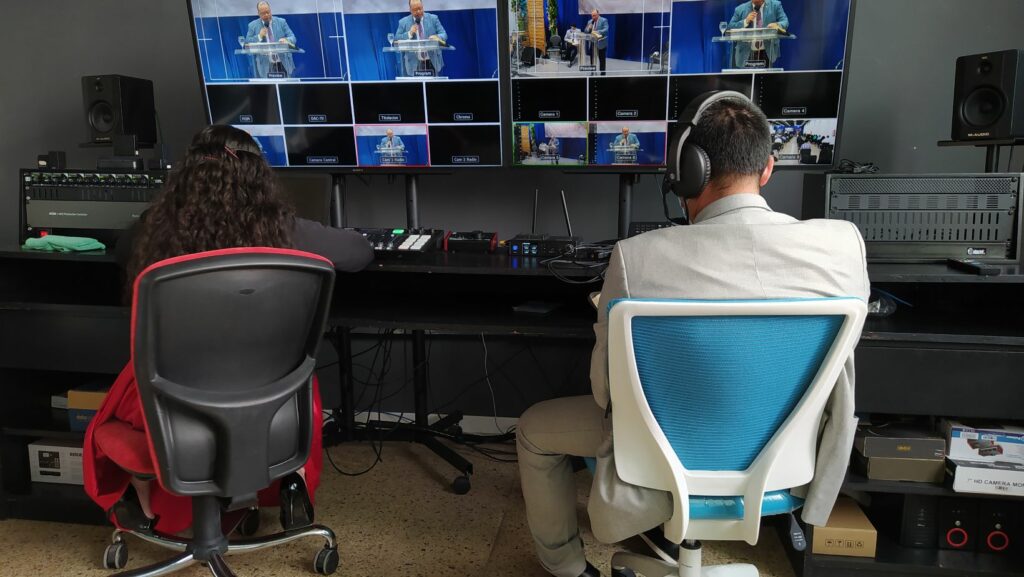Example of Broadcast Media
- Definition and Scope: Broadcast media includes channels like television and radio that distribute content broadly to engage and inform audiences.
- Audience Reach: These platforms can simultaneously connect with millions, making them powerful tools for communication and public engagement.
- Cultural Influence: Broadcast media shapes societal norms and values by showcasing diverse cultures and addressing pressing social issues.
- Types of Broadcast Media: The primary forms are television and radio, each serving distinct purposes and reaching audiences in unique ways.
- Role in Emergencies: Broadcast media is essential for emergency communication, providing timely updates and critical information to ensure public safety.
- Advertising Revenue: It generates significant revenue through commercial advertising, benefiting both broadcasters and businesses.
Broadcast media plays a crucial role in shaping public opinion and delivering information to vast audiences. From television to radio, these platforms have the power to connect people across different regions, making them essential tools for communication. As technology evolves, the ways in which broadcast media engages viewers and listeners are constantly changing.
In this article, readers will explore various examples of broadcast media, highlighting their impact on society and culture. By examining both traditional and modern forms, it becomes clear how these mediums influence everything from entertainment to news dissemination. Understanding these examples not only sheds light on the media landscape but also reveals the vital role broadcast media continues to play in everyday life.
Overview of Broadcast Media
Broadcast media encompasses communication channels that distribute audio and visual content to the public. These channels, primarily television and radio, serve as key vehicles for informing and entertaining audiences.
Definition of Broadcast Media
Broadcast media refers to the transmission of information, news, entertainment, and other content to a wide audience through electronic means. This includes television stations, radio broadcasters, and digital platforms that utilize signals or streaming technology to reach consumers. The primary goal is to deliver timely and relevant content to the public, making it accessible for mass consumption.
Importance of Broadcast Media
Broadcast media plays a crucial role in shaping public opinion, raising awareness on important issues, and fostering social cohesion. It connects diverse groups by providing a common source of information, thereby enhancing community engagement. Broadcast media aids in crisis communication, delivering essential updates during emergencies and natural disasters. Additionally, it supports cultural exchange by highlighting various perspectives and experiences, contributing to a well-rounded society.
| Aspect | Description |
|---|---|
| Audience Reach | Broadcast media can reach millions of viewers and listeners at once. |
| Content Variety | Offers a wide range of programming, including news, entertainment, and educational content. |
| Real-Time Communication | Provides immediate updates on current events, enhancing information accessibility. |
| Cultural Impact | Influences societal norms and values by showcasing diverse cultures and ideas. |
| Advertising Revenue | Serves as a significant source of revenue for businesses through commercial advertising. |
Types of Broadcast Media

Broadcast media consists mainly of two types: television and radio. Each medium plays a distinct role in delivering content to diverse audiences.
Television
Television serves as a primary source of news and entertainment for millions. It combines audiovisual elements to engage viewers effectively. Broadcasters deliver diverse programming, including news shows, dramas, documentaries, and reality programs. According to the Nielsen Company, over 120 million households in the U.S. have at least one television set, highlighting its pervasive presence. Different formats, such as live broadcasts and recorded content, cater to various viewing preferences.
Radio
Radio remains a vital medium for reaching audiences, especially in areas with limited access to internet or television. It offers a wide array of content, from news bulletins to music stations and talk shows. In 2022, the Radio Advertising Bureau reported that approximately 90% of Americans aged 12 and older listen to the radio weekly. Radio’s accessibility fosters community connection, allowing local stations to address regional topics and events. Its portability enables listeners to engage with content while commuting or performing daily activities.
Examples of Broadcast Media

Broadcast media encompasses various platforms that deliver content to wide audiences, including national television networks and regional radio stations. These examples illustrate the diversity and impact of broadcast media in society.
National Television Networks
National television networks serve as significant sources of news and entertainment across the country. Major networks include ABC, NBC, CBS, and FOX, each providing a range of programming that includes news broadcasts, reality shows, dramas, and sports events. These networks reach millions of viewers daily, with broadcast coverage extending to urban and rural areas alike. For instance, as of 2023, ABC’s nightly news attracts over 7 million viewers, showcasing the enduring influence of national television in shaping public awareness and opinion.
Regional Radio Stations
Regional radio stations play a vital role in connecting communities through localized content. They offer diverse programming that focuses on regional news, weather updates, music, and talk shows that resonate with local interests. According to the Nielsen Audio research from 2023, approximately 90% of adults in the U.S. tune into radio weekly, highlighting its widespread reach. This format allows listeners to stay informed on pressing issues while fostering community engagement. Stations like WNYC in New York or KCRW in Los Angeles exemplify how regional radio addresses local topics, enhancing the connection between broadcasters and their audiences.
The Impact of Broadcast Media

Broadcast media significantly affects public perception and serves as a key source of information during critical situations. These platforms play a pivotal role in shaping narratives and providing timely updates.
Influence on Public Opinion
Broadcast media influences public opinion through the dissemination of information, news, and entertainment. Television and radio programs have the power to shape perceptions by framing issues in specific contexts. Reports and discussions on current events, political debates, and social issues reach millions of viewers and listeners, ultimately molding attitudes and beliefs. According to Pew Research Center, about 59% of Americans often get news from television. This extensive reach highlights television’s crucial role in informing the population and drawing attention to important topics. Furthermore, social media integration with traditional broadcast enhances audience engagement, allowing for immediate feedback and interaction, thus amplifying the impact on public sentiment.
Role in Emergency Communication
Broadcast media functions as a vital communication tool during emergencies. Timely dissemination of critical information, such as weather alerts, evacuation orders, and safety instructions, can save lives. In many instances, television and radio serve as primary sources for alerts, particularly in communities with limited access to the internet. The Federal Emergency Management Agency (FEMA) reports that over 90% of U.S. adults depend on broadcast media for emergency information. During significant events, such as natural disasters or public health crises, these mediums help coordinate responses and disseminate accurate updates, ensuring communities remain informed and connected. The immediacy of broadcasting enhances information delivery and reinforces trust in official communications, which is crucial in times of uncertainty.
Community Connection
Broadcast media remains a cornerstone of information dissemination and community connection. Its ability to reach vast audiences through television and radio ensures that crucial news and entertainment are accessible to everyone. As technology continues to evolve, these platforms adapt while maintaining their essential role in shaping public perception and fostering social cohesion.
The significance of broadcast media in emergency situations can’t be overstated. Its immediacy and reliability make it a vital resource during crises. With millions relying on these mediums for news and updates, broadcast media will undoubtedly continue to influence society and culture for years to come.

